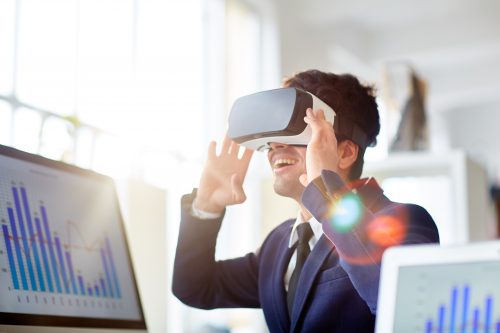As you start to work with the new features in Adobe Captivate 2019, you start to see a theme with many of the features. For me, that theme is experiential learning. Of course, some of you would argue that you cannot have experiential eLearning. eLearning isn’t close enough to real life. While we may not be able to immerse learners entirely in reality, this version of Captivate takes a few big steps toward that direction.
As you start to work with the new features in Adobe Captivate 2019, you start to see a theme with many of the features. For me, that theme is experiential learning. Of course, some of you would argue that you cannot have experiential eLearning. eLearning isn’t close enough to real life. While we may not be able to immerse learners entirely in reality, this version of Captivate takes a few big steps toward that direction.

For a few years, I’ve been listening to other Captivate developers talk about virtual reality and the dream to design 3D eLearning. That dream is now a reality with Captivate 2019. You can now create a virtual reality eLearning project that learners can view on their computer screen, mobile device and even using a VR headset. Learners can turn in all directions and view whatever environment you wish to display to them. You can make it truly interactive by adding hotspots to perform a variety of different actions. You can play additional audio, display additional images, show the learner a text passage and much more. I’m very interested in seeing how other developers use this feature. If eLearning was a video game, we’ve just gone from Donkey Kong to World of Warcraft.
VR is cool, and everything but I predict that the breakthrough feature of Adobe Captivate 2019 will be the new Interactive Video feature. An interactive video gives you the ability to design video-based learning interactions for your learners that are truly engaging and immersive. You can insert bookmarks on the video timeline and jump to those bookmarks from anywhere in your eLearning project. You can also add overlay slides that will hover over the paused video for learners to gain additional information. You can also add question slides as overlays. You can have the outcome of the question determine where you navigate your learners to depending on how they answer. So for example, if the learner gets a question wrong you can navigate to a portion of the video where the video instructor provides remediation to the learner, or alternatively offer praise to the learner for getting the answer correct.
I’m really excited to not only see what other developers will use these features for, but I’m excited to start telling my clients about what we can now do in eLearning that we couldn’t do today. I’d love to hear what your ideas are. Feel free to put your own suggestions in the comments below and please share this article with your fellow eLearning designer-developers.
Hi Paul Wilson I’m currently working on my APP the Capstone for my MATC (Masters Arts Technical Communication) and wanted to know if you have published any blog posts on your owned website that references how you’ve included AR, VR, or MR in your instructional design deliverables.
Thanks for all you do to further the Captivate community, I found this community via your video about eLevels.
I’m not at liberty to discuss the details of the one instance where I’ve designed and developed a 360° project because of an NDA. I’m eagerly awaiting an update to the tool to complete this project because there are some shortcomings that my client wants to be rectified and I’m hopeful that the update will solve those problems.
Generally, I will say that we are in the early days of 360° projects. I’m still looking for more interactivity and reporting capabilities in the tool.
Here are my thoughts on that. Many eLearning designers and developers point out that the majority of their eLearning is consumed on desktop computers but look around while you are out there. I see more and more mobile devices in the workplace. My sister owns a shop, and her point of sale system is an iPad mini with one of those square credit card swipe devices connected to it. There is no computer in sight. I also see remote workers who would have one time been lugging around a laptop for invoicing and record keeping now using iPads (usually in a rugged case.
Thanks Paul_Wilson for writing the product review! Look forward to your CP2019 feature videos.
You must be logged in to post a comment.









